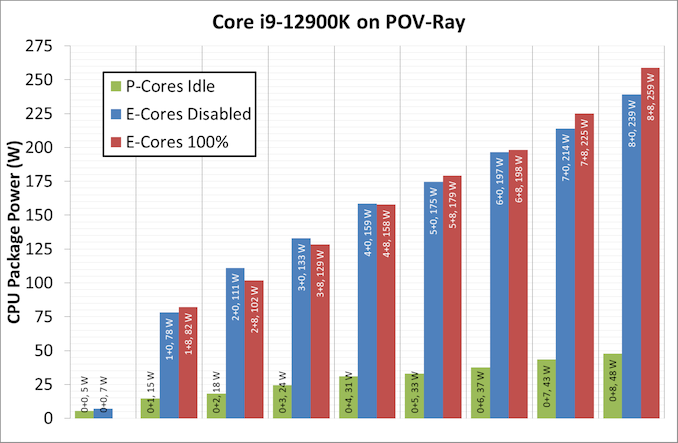Originally posted by smitty3268
View Post

The green bars are E-cores only. With 8 E-cores, we get package power of 48 W. If you divide it evenly, that's 6 W per core. However, we could also subtract off some overhead to get a better idea about how actual core power would scale. Just taking the 1-core and 8-core data points, I get a per-core power of about 4.7 W + 10.3 W of overhead.
If we scale that up to a 280 W package, which seems at the upper range of what server CPUs are using, these days, it only nets us 57 cores. Obviously, that's not the sort of core-count you'd target with a pure E-core server CPU. So, clocks would have to be scaled back by a nontrivial amount, at least during such a workload.


Comment